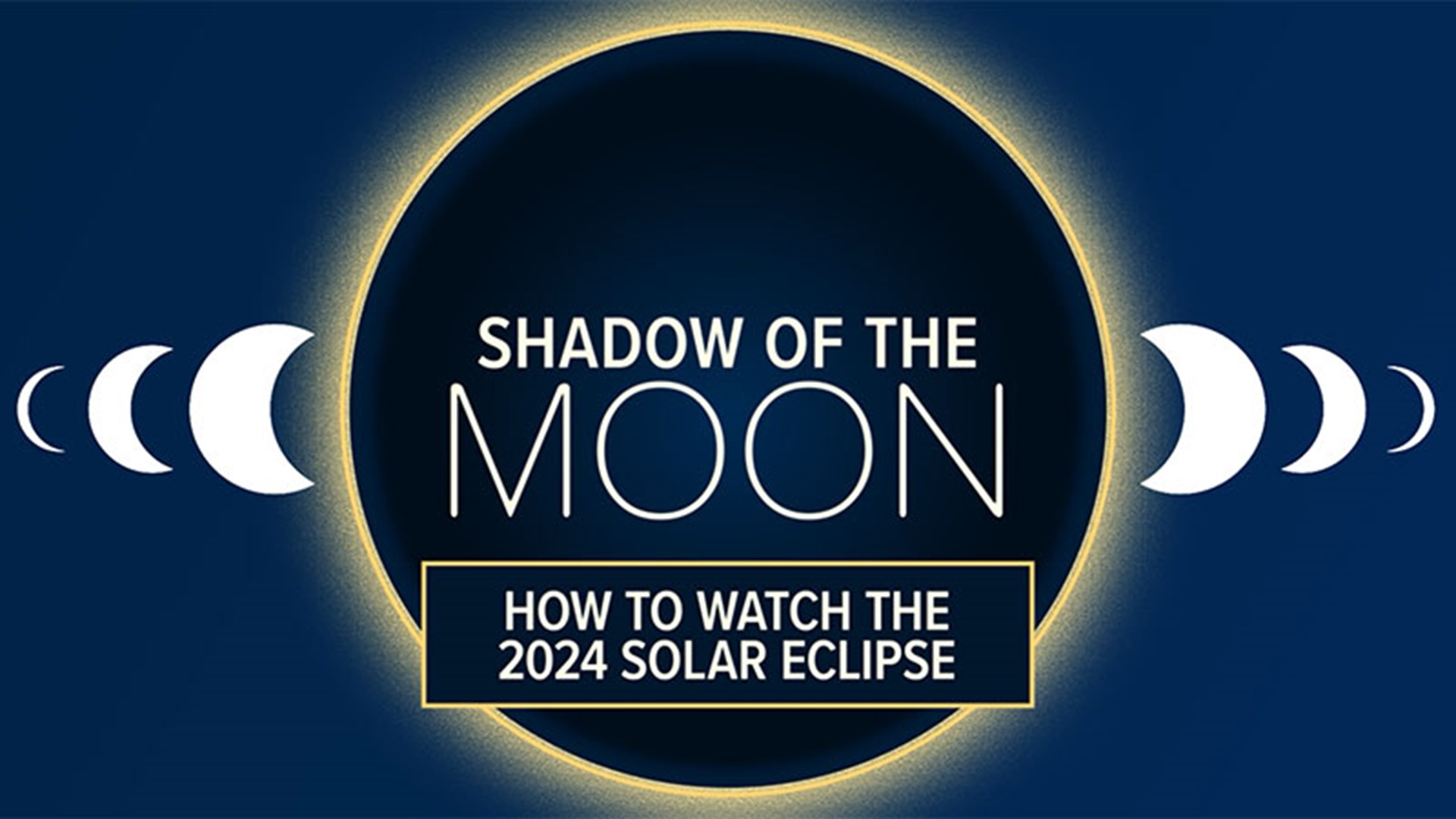Here's where San Antonians can view the total solar eclipse on April 8, 2024
According to NASA, everyone in North America will be able to view the solar eclipse but only those located in the path of totality will see the sun's rays.
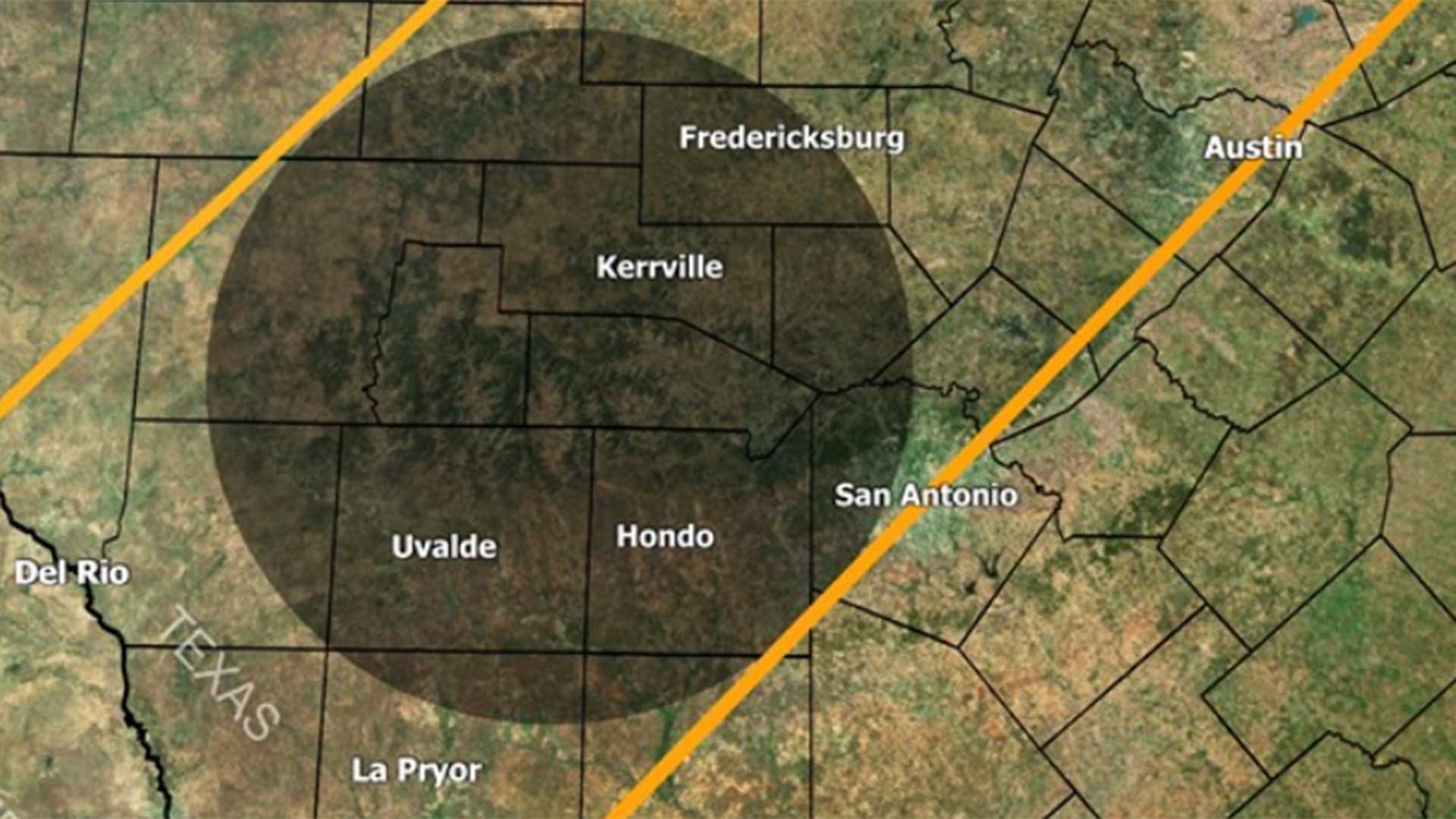
Get ready San Antonians because a total solar eclipse is coming close to the Alamo City this spring.
This sky event will be different from last October's eclipse when a 'ring of fire' was displayed. During a total eclipse viewers have the luxury to take off their solar glasses for small amount of time to view the sun's rays as the moon will cast a complete shadow across the sun's disk.
According to NASA, everyone in North America will be able to view the solar eclipse but only those located in the path of totality will see the sun's rays.
Path of 100% coverage
The path of totality will be located in the western portion of Bexar County therefore not everyone will see it unless you make a drive to areas near Fair Oaks Ranch, Leon Springs, Helotes and SeaWorld.
In the black area lies just a small portion of Bexar County in the main pathway for the eclipse and those residing outside the black circle will be closer to 80 percent coverage.
However, no matter where you plan to view the annular eclipse there are some things to remember in order to experience its full effect.

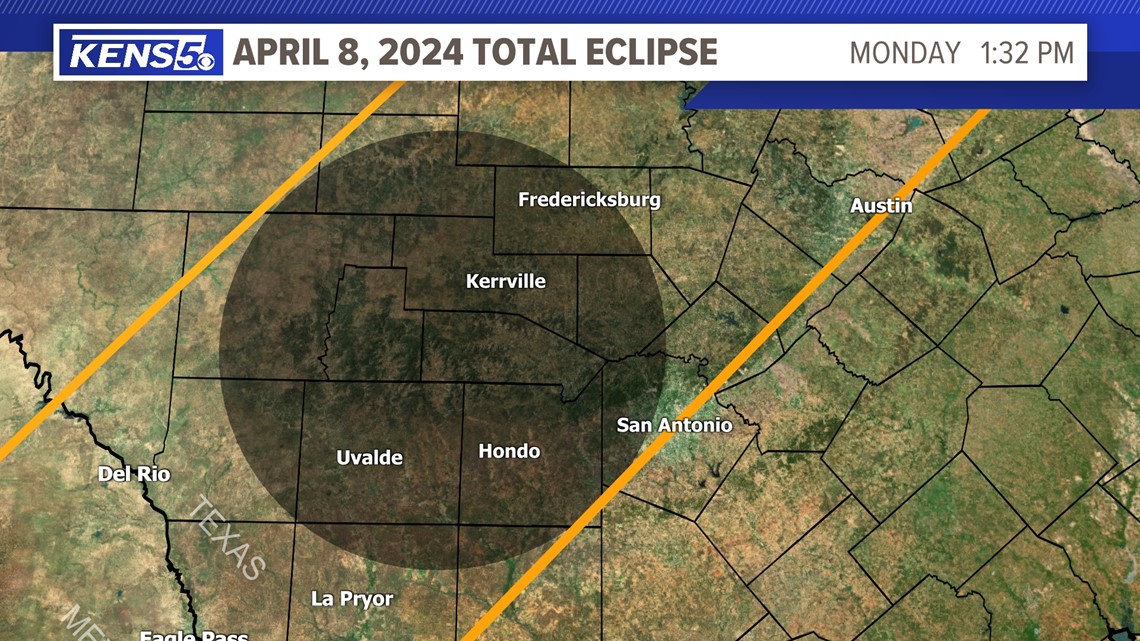
When and where does the eclipse take place?
The total solar eclipse will take place on Monday, April 8, 2024 crossing through both Mexico and North America.
The event begins as early as 12: 14 p.m. then ending almost three hours later at 2:55 p.m., according to time and date.
Although it seems long, the peak time for San Antonio to see totality will only last as long as three minutes starting at 1:34 p.m. During this time, depending where you are located can see the says behind the moon and the sky will grow darker.
Remember only during complete totality is it acceptable to remove your solar glasses.
According to National Geographic animals may act different such as crickets start chirping and birds stop singing.

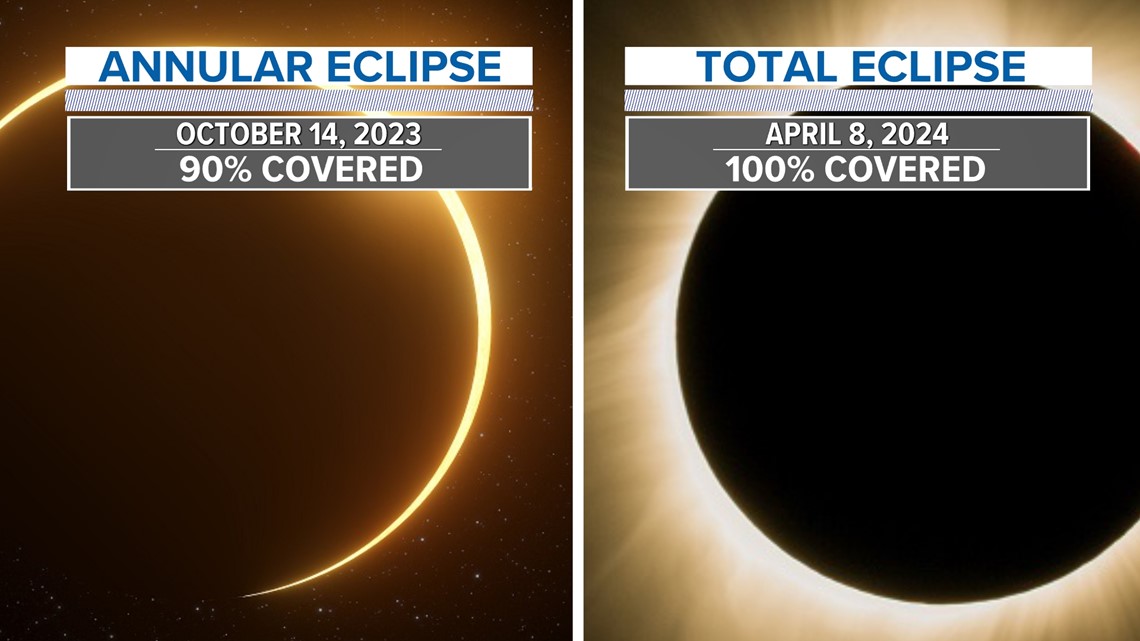
Can I look directly at the sun during the eclipse?
Just because the sun is "blocked" by the moon doesn't mean looking directly at the sun is safe. You should never look directly at the sun, even with sunglasses. However, during a solar eclipse, there are special glasses allowing direct viewing with your eyes called eclipse glasses.
Eclipse glasses are thousands of times darker than normal glasses and must comply with the ISO 12312-2 international standard, according to NASA.
There are also solar filters that can be placed on telescopes and cameras for those trying to get an up-close view of the eclipse.
Only during 100 percent totality is it safe to remove your glasses and only for a few minutes as the moon's shadow will begin moving away from the sun after a few minutes. Be sure to place your solar glasses back on during this time.
What's an annular eclipse vs. a total eclipse?
During an annular solar eclipse, the moon is at its farthest point from the Earth, so it appears smaller and can't cover the entire sun like during a total eclipse. Therefore, during an annular solar eclipse, the moon appears as a dark disk with a brighter area appearing to be a ring around it.
This is very different from a total eclipse, when the moon appears to be the same size, leaving only the Sun's corona and outer atmosphere to show. Here viewers can actually remove their solar glasses for a short time, according to the NASA website.

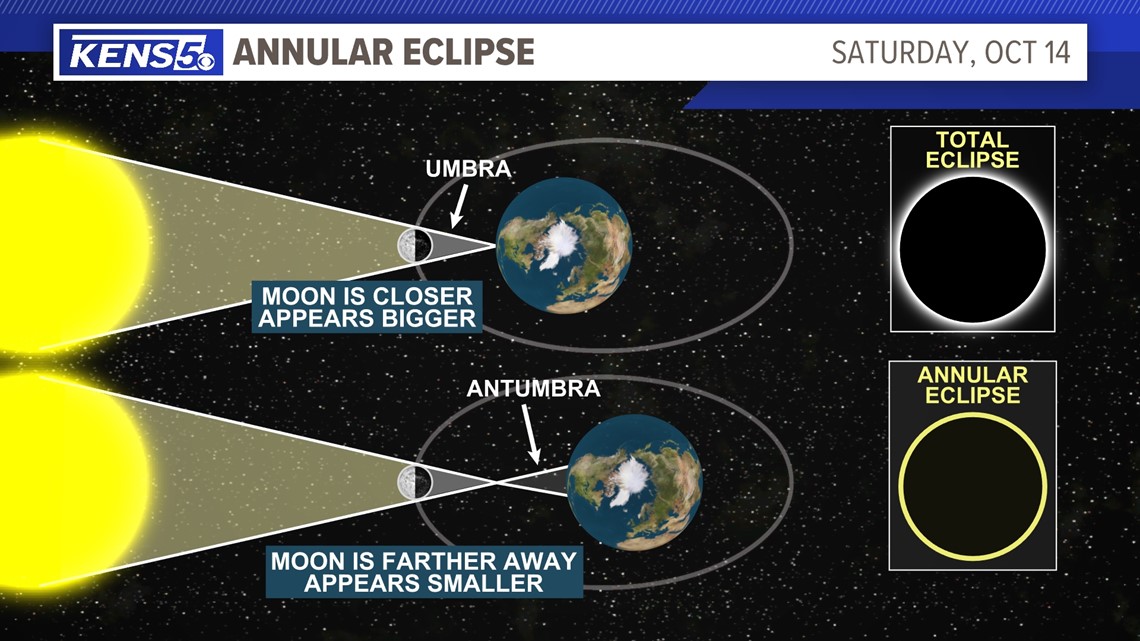
San Antonians are very fortunate to be in the direct path for both the annular eclipse on October 14, 2023, and the total eclipse on April 8, 2024.
Here's a look at the October 2023 annular eclipse in San Antonio:


